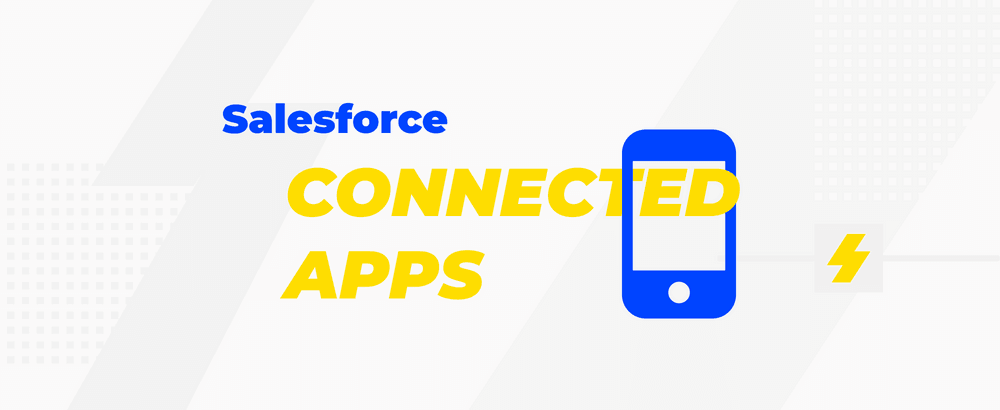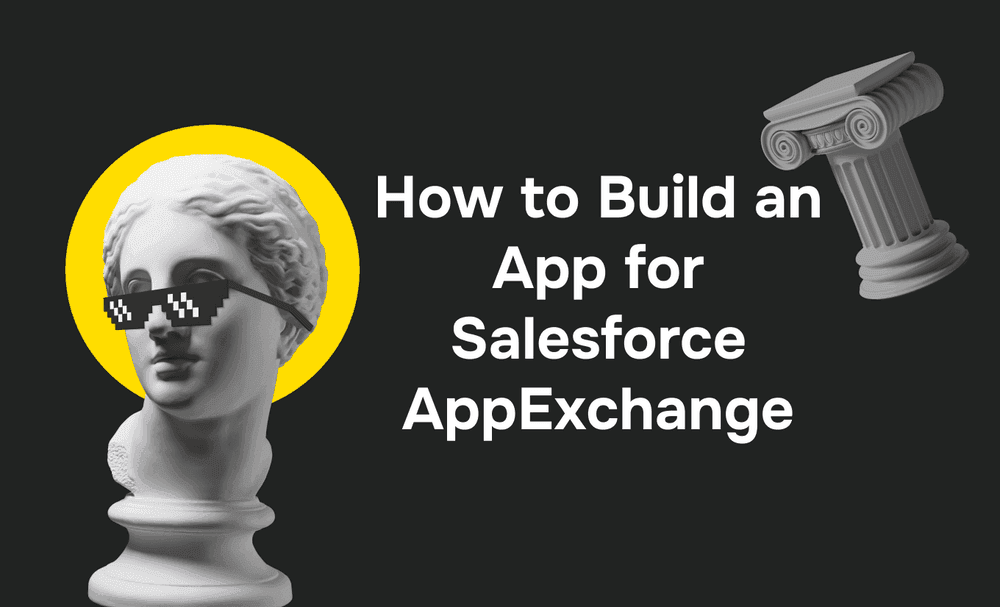By itself, Salesforce is a powerful CRM solution for businesses. Yet, you can achieve much more for your company by expanding its functionalities through Salesforce integrations. There are two ways to go about integrating with Salesforce, by creating a Salesforce connected app or developing an AppExchange extension.
While many business owners are familiar with the Salesforce AppExchange, the term Salesforce connected app may sound new. In this article, we’ll explain what a Salesforce connected app is, how it differs from an AppExchange app and why you’ll want to build one for your business.
What is a Salesforce Connected App

A Salesforce connected app is an in-between application that uses a set of Salesforce APIs to extract data from your Salesforce org. It connects an external app with Salesforce by using protocols like SAML, OAuth, and OpenID Connect to grant access to the former.
For example, you’re using a 3rd party auto emailer mobile app, and you want to furnish it with customer data from Salesforce. You then build a Salesforce connected app to authenticate the auto emailer app with Salesforce through the required authentication process.
When successfully authenticated, Salesforce would send policies that include information like access restriction and expiry duration for the session. As long as the session is active, the external app can freely exchange data with Salesforce.
How Connected App is Different from AppExchange app
A connected app can be likened to a bridge between an external app and Salesforce. It links both platforms by setting up a secure data transfer channel through necessary authentication. The connected app uses an access token to extract data from Salesforce once permission is granted.
Meanwhile, an AppExchange app is developed on the Salesforce platform itself. In other words, it is native to Salesforce. There is no need for authentication nor integration as the AppExchange app is built to use data stored on Salesforce. However, you’ll need to pay $2,500 to get the app listed on AppExchange and a $200 yearly fee thereafter.
You’ll have to go through a sequence of processes to set up a connected app, while it only takes a single click to install an AppExchange app.
Why Companies and Salesforce Developers Are Making Apps for AppExchange
At the moment of writing, the Salesforce AppExchange boasts over 5,000 solutions. It is a buzzing marketplace for companies that are looking for ready-to-go Salesforce integration. And 95% of Fortune 100 companies have made at least one of the AppExchange apps part of their solution.
Over the years, more companies and developers are building and publishing apps on AppExchange. There are a few obvious reasons that drive the companies to do that. For a start, the AppExchange is a ready market with access to some of the world’s largest companies.
Salesforce also makes it easy for developers to publish their apps on AppExchange. By joining the Partner Community, developers are given access to the technologies needed to build and manage the apps on AppExchange. For example, the License Management App allows developers to track licensing for their published apps easily.
When publishing on AppExchange, developers do not need to worry about the lack of publicity. Salesforce is doing a great job in promoting its AppExchange offerings. Developers get to run ads on the weekly AppExchange Digest, which is bound to hit the inbox of existing customers.
Besides that, Salesforce also provides analytic tools for developers to monitor how their apps are fairing on the AppExchange marketplace. It helps them to refine the app to fit the user’s needs.
Popular Use Cases For Making Salesforce Connected Apps

AppExchange seems to be the popular choice for Salesforce integrations, but there are good reasons why you’ll want to build Salesforce Connected Apps
1. Secure Data Sharing With API
By using the OAuth 2.0 protocol, you can turn a connected app into a bridge between Salesforce and an external application. The connected app allows secure data transmission between Salesforce and external apps by using tokens.
2. Salesforce Org and Service Provider Integration
Chances are, you’re using a few service providers for your business. In order to enhance customer experience, you can use a connected app to integrate the service providers with Salesforce.
There are a couple of ways to do that.
Salesforce-connected apps support SAML2.0, which is an authentication protocol that can be used to connect a service provider app with Salesforce. It allows setting up a single sign-on session with Salesforce credentials on the provider’s app.
Alternatively, you can use OpenID Connect with the connected app to securely integrate a service provider app with Salesforce. This method works as long as the service provider app accepts the OpenID Connect token.
3. Managing 3rd Party App Access
The Salesforce Connected app not only integrates 3rd party apps to Salesforce but also allows you to control who has access to the apps. You can do so by choosing the “Admin approved users are pre-authorized option on the connected app.
Once selected, only users on the authorized list can use the 3rd party app integrated with Salesforce. It is also possible to set a time-limited approval, where the app can only access Salesforce data for a pre-determined duration.
4. External API Gateways Authorisation
When you are storing resources at an external API gateway and need a secure way to access them, you can turn to Salesforce-connected apps. In this application, the external server will seek authorization from Salesforce via OAuth. Once granted, the external server can securely access the gateway-protected data.
Summary
AppExchange does indeed provide the flexibility to extend Salesforce’s functionality with ease. However, it isn’t the only option, nor does it serve every business purpose. When your business requires a more customized solution and with greater control, building a Salesforce Connected app is the answer.
Salesforce-connected apps provide a complete and secure framework for external apps to integrate with Salesforce. As business owners, you’ll have control over how the authentication process is done and who has access to the Salesforce data.
Still doubtful if building Salesforce-connected apps is the right choice? Talk to Salesforce development team at MagicFuse today.
FAQ
What is a Salesforce Connected App?
A Salesforce Connected App is an application that integrates with Salesforce using APIs and OAuth (Open Authorization) protocols. Connected Apps enable third-party applications to access Salesforce data securely, and allow users to grant access to their Salesforce data to external applications.
How do I find Connected Apps in Salesforce?
To find Connected Apps in Salesforce, you can navigate to Setup > App Manager and select the Connected Apps tab. Here, you will find a list of all the Connected Apps that have been installed in your Salesforce org. Or you can look for Connected Apps by name, and view details such as the Connected App's name, description, and status.
How does Salesforce Connected App work?
When a user grants access to a Connected App, the app sends a request to Salesforce's OAuth server, which generates an access token to authenticate and make API requests to the Salesforce org on behalf of the user. Connected Apps can be configured to control the level of access granted to external applications, and helps ensure the security of their Salesforce data.
















